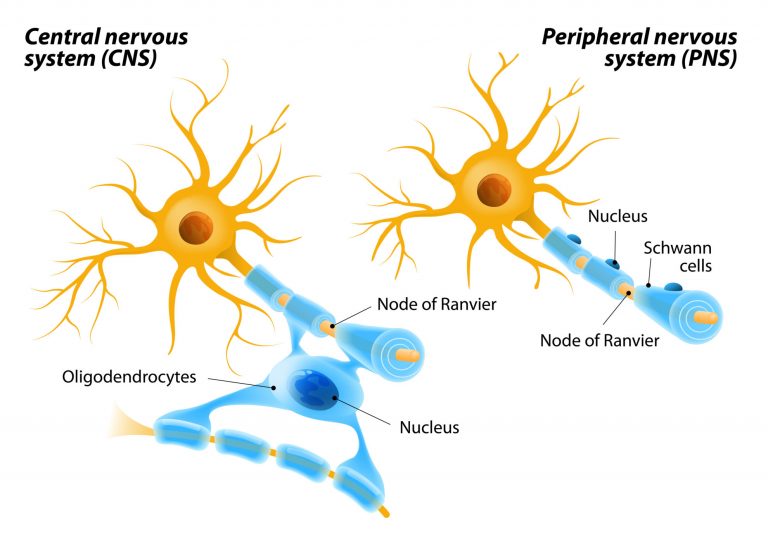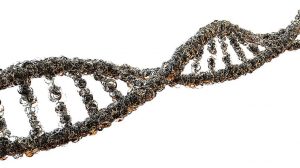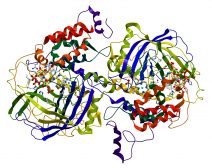The Central Nervous System

Oligodendrocytes in the central nervous system (unlike the Schwann cells in the peripheral nervous system) form segments of myelin sheaths of numerous neurons at once.
Table of Contents
Myelin Sheath
Myelin is a substance that forms the myelin sheath associated with nerve cells. This sheath is a layer of phospholipids that increases the conductivity of the electrical messages that are sent through the cell. Diseases such as multiple sclerosis are a result in a lack of this myelin sheath, with the effect is that the conductivity of signals is much slower severely decreasing the effectiveness of the nervous system in sufferers.
In total, there are 43 main nerves that branch off the Central nervous system (CNS) to the peripheral nervous system. (The peripheral nervous system is the nervous system outside the CNS.) These are the efferent neurons that carry signals away from the CNS to the peripheral system.
Somatic Nervous System
These efferent fibers are divided into the somatic nervous system and the autonomic nervous system. The somatic fibers are responsible for the voluntary movement of our body, i.e. movement that you consciously thought about doing.
Autonomic Nervous System
The autonomic nervous system incorporates all the impulses that are done involuntarily, and are usually associated with essential functions such as breathing, heartbeat, etc. However, this type of system can further be broken down into the sympathetic and parasympathetic systems which keep one another in check in a form of negative feedback such as the release of insulin and glucagon in sugar control of the blood.
All of the actions executed by the autonomic nervous system are unconsciously done.
These informational pulses executed in our nervous system allow us to do our daily functions. The processing of this information is done in the CNS, the brain, a highly developed mass of nerve cells. The inner workings of the brain are investigated on the next tutorial, Types and Causes of Brain Damage.
You will also like...

Gene Regulation in Eukaryotes
Learn about the general structure of a eukaryotic gene, the transcription factors, and post-transcriptional regulation....

New Zealand’s Unique Geographical History
Explore why New Zealand has such unique flora and fauna, and learn why long periods of geographical isolation. This less..

Genetic Mutations
This tutorial looks at the mutation at the gene level and the harm it may bring. Learn about single nucleotide polymorph..

Protein Variety
The sequence of amino acids determines the type of protein. Protein is synthesized according to the sequence of nucleoti..

Mendel’s Law & Mendelian Genetics
One of Mendel’s law of inheritance is the “law of dominance”. Read this tutorial to know more about this form of i..

Protein Activity and Cellular Metabolism
Proteins have a crucial role in various biological activities. Get to know how proteins are able to perform as enzymes, ..
